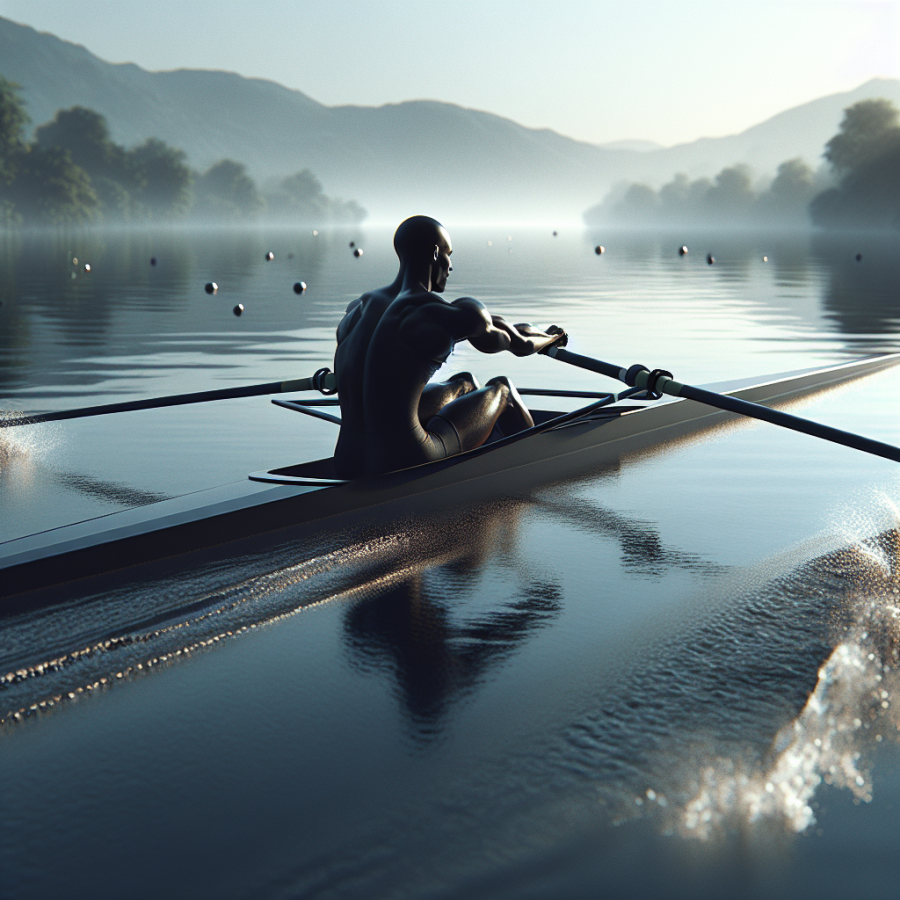Honing Your Stroke: Advanced Tips to Elevate Your Single Scull Performance
Improving your technique and overall performance in single scull rowing demands dedication, precise skill development, and an in-depth understanding of the complex dynamics of the sport. Here, we delve into some advanced tips that can help you refine your stroke and elevate your single scull performance.
**Technical Refinement for Balance and Stability**: Achieving a stable and balanced boat is essential. Focus on precise blade work by entering and exiting the water at consistent angles and minimizing splash. Practice drills that isolate one part of the stroke, such as the catch or the finish, to develop a smooth, fluid movement and maintain level hands through the drive.
**Strength and Conditioning for Power Delivery**: Power is a critical aspect of rowing. Developing strength, particularly in the core and leg muscles, will markedly improve your power output. Tailor your off-the-water workout routines to include exercises like squats, deadlifts, and core stability exercises that mimic the rowing motion.
**Enhancing Endurance Capabilities**: Endurance is vital for maintaining high performance levels throughout a race. Incorporate long, steady-state rowing sessions into your training, where you maintain a consistent pace for an extended period. This will build your aerobic capacity and help you manage lactate levels during intense sessions.
**Advanced Boat Handling Skills**: Manipulate the boat with subtle weight shifts, learning to make fine adjustments without disrupting the rhythm. Practice rowing with one hand or closing your eyes momentarily to sense the boat's balance, reinforcing your feel of the boat's reactions to your movements.
**Rigging and Equipment Optimization**: The way your boat is rigged can significantly impact your strokes' efficiency. Experiment with different oar lengths, inboard settings, and foot stretcher positions to find the optimum setup tailored to your body mechanics and rowing style. Remember to account for factors such as water conditions and weather when considering rigging adjustments.
**Psychological Conditioning and Strategy**: Mental toughness and strategic thinking are as crucial as physical ability. Develop your race plan, focusing on managing your energy reserves efficiently and mastering the ability to execute strategic moves against opponents. Visualization techniques and self-talk can help build mental resilience for competition.
**Technical Analysis Through Video Review**: Utilize video recordings of your rowing sessions to gain insights into your technique. Slow-motion analysis can be incredibly valuable for catching nuances and errors that might be missed in real-time. Regular reviews with a coach or experienced rower can provide constructive feedback for continued improvement.
Read also:
The Joys of Leisurely Driving: A Journey for the Senses
Navigating the Waters: Essential Techniques for Single Scull Rowing
Rowing in a single scull requires a fine balance of power, skill, and poise. One of the most important aspects of mastering this art is learning to navigate the waters effectively. Whether you're contending with calm or choppy waters, the way you manipulate your oars and adjust your stroke can make a significant difference in your performance.
The first technique to master is the catch. The catch is the moment your oar blade enters the water, and it's crucial to get this right to ensure a smooth, powerful stroke. Make sure to fully extend your arms before entering the water, keeping your wrists flat and your grip firm but relaxed. The blade should enter the water at a sharp angle to maximize traction and minimize splash.
Following the catch, the drive phase begins. In this phase, you should focus on maintaining a consistent power curve. This is achieved by pushing with your legs before engaging your back and arms, creating a sequential motion that maximizes the force transmitted to the oars. Keep your core engaged throughout the drive to stabilize your body and maintain balance.
The release, or finish, is equally critical. It should be a smooth and controlled movement where the blade exits the water at the end of the stroke. To prevent disrupting the boat’s balance, feather the oar—rotate it so that the blade is parallel to the water's surface—as you finish and prepare for the recovery.
During the recovery phase, your aim should be to prepare for the next stroke with minimal disruption to the boat's speed. This is typically done by gradually compressing the knees and sliding the seat forward while the hands and oar move forward to start the next catch.
Good body positioning is key in single scull rowing. You'll want to maintain a strong, straight back and avoid excessive body lean during any part of the stroke. While a certain degree of lean is necessary at the catch and finish, resist the urge to overreach or over-rotate, as this can throw off the boat's balance.
Balance and stability are essential, especially in single sculls where the margin for error is narrower than in team boats. An imbalanced boat creates drag and reduces the effectiveness of your strokes. Practice rowing with one oar (known as doing the 'pause drill') to develop an even stroke and consistent pressure on each side.
Your ability to navigate in different water conditions will improve exponentially with focused practice on these techniques. Rough waters demand a strong, adaptable rower.




